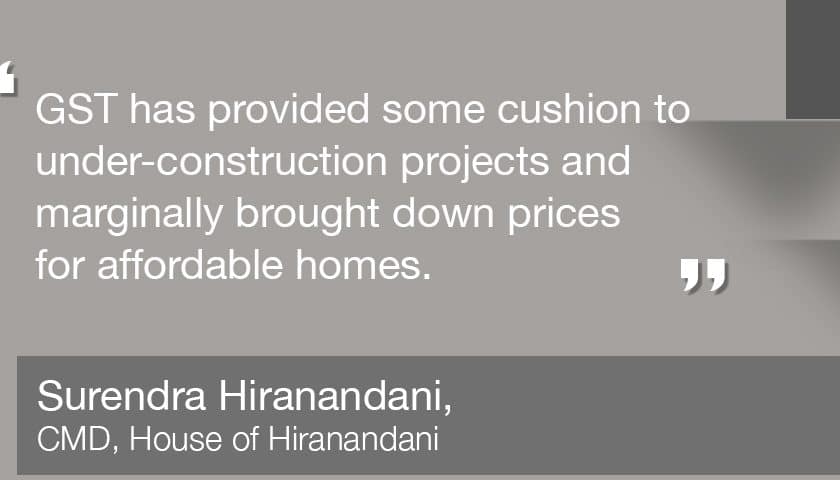It’s been one year of GST! The government’s GST initiative over the past year helped streamline the tax administration by bringing more transparency in our taxation system.
As expected with any game-changer of this magnitude, the initial few months were fairly disruptive not only for the industry but also for consumers as well as government authorities. Confusions ranging from filing returns up to the recent requirement of e-way bills have kept GST in the limelight.
However, GST still had a positive impact on consumers as the rates on numerous items were brought down from 28% to a more reasonable mean of 18%.
We are confident of its benefits in the long run if the government clarifies a few issues faced by our industry.
Clarity on the abatement for land cost
There needs to be more clarity on the abatement available for the land cost for calculating service tax on under-construction projects.
This will have a major implication on the final prices because if the cost of land is 10% of the overall project, there is a possibility of stagnant final costs.
However, in major metropolitan cities of India, the land cost is almost 50-60% of the total costs, so apartment prices might rise here.
High land prices still remain a major obstacle in making real estate an affordable commodity in the true sense.
Attention to stamp duty
One more area that will further strengthen GST’s long-term impact is attention to stamp duty. It continues to remain in force even after GST implementation and the rates are varying for different states.
The additional burden on the sector on account of the stamp duty averages 5%-7%. We hope that state governments abolish the same or merge with the existing GST rates, which will further help bring down the cost of apartments.
GST has provided some cushion to under-construction projects and marginally brought down prices for affordable housing owing to the input tax credits, but we are yet to see a significant impact in the mid-sized or luxury space.
At present consumers can avail benefits only on those projects which are nearing completion or completed post the implementation of GST. For most projects, the benefit may not exceed 5% of the overall construction cost.
It is important that the government engages with stakeholders to address their concerns and work in harmony to bring more clarity for the sector that in turn can substantially contribute to the ‘Housing for All by 2022’ mission.
This article is contributed by Surendra Hiranandani, CMD, House of Hiranandani.
(The views expressed here are solely those of the author and do not necessarily represent or reflect the views of RoofandFloor)

